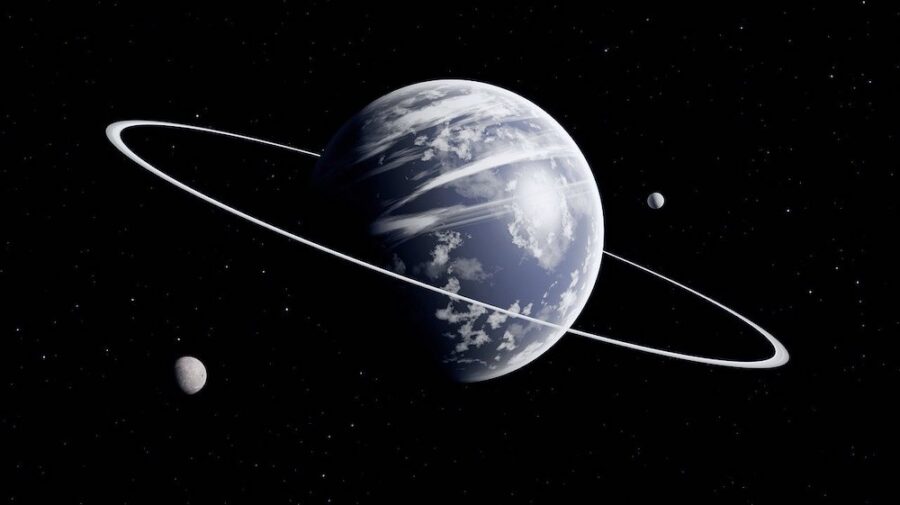One Of Neptune’s Moons Is Hiding A Subsurface Ocean?

Mankind’s exploration of space has revealed many fascinating discoveries over the years about the composition of our solar system and how it evolved into its current, relatively stable, state.
For all this examination of the planets and asteroids, most planetary exploration these days boils down to one thing: the search for possible life-bearing environments, either in the present or earlier in our solar system’s history.
Now we can add one more location of interest to that search, as a group of researchers think there may be a subsurface ocean on Neptune’s largest moon, Triton.
Neptune and its moons are probably one of the last places you’d think of when it comes to extraterrestrial life.
Neptune orbits roughly 30 AU from the sun; that’s 30 times the distance from the Earth to the Sun. At this distance, Neptune’s largest moon, Triton, has an average surface temperature of −235 °C, so there’s zero chance of little green men living on its surface, no matter how comfy their sweaters may be.
But all hope is not lost for Neptune’s frozen moon. According to Universe Today, in 2012 a research team at the University of Maryland believes that, through a process known as tidal heating, Triton could be hiding an ocean underneath its frigid surface.
Saswata Hier-Majumder, of the University’s Department of Geology, was cautiously optimistic about the study’s claims.
I think it is extremely likely that a subsurface ammonia-rich ocean exists in Triton. [Yet] there are a number of uncertainties in our knowledge of Triton’s interior and past which makes it difficult to predict with absolute certainty.
Subsurface oceans are the current untapped scientific goldmine of our solar system, Neptune included. It has long been suspected that Jupiter’s moon, Europa, could have one large enough to rival the oceans of Earth, and the relatively recent discovery of the geysers on Saturn’s moon, Enceladus, all but confirms the possibility of its subsurface reservoirs.
The oceans are caused when the cores of the moons are heated by the tidal forces of gravity from their respective parent planets. The presence of ammonia mixed in with the moon’s water could lower the freezing point of the water that much more, making the tidal forces an ample source of heat for keeping the oceans in a liquid state.
While the chances of Triton hosting life forms near Neptune in its subsurface waters are still relatively slim, the presence of so many candidates (even the dwarf planet Ceres is speculated to have subsurface water) puts the overall odds of finding life in our solar system that much higher, at least in theory.
Unfortunately, we’ll never know for sure if alien fish are our closest cosmic neighbors unless NASA or somebody else sends a mission to explore these possible outposts for life. And, of course, evidence about Neptune’s moons holding ocean water are anything but conclusive.
But as we continue to push further and further into space, these answers might end up coming faster than we ever thought. Oceans and all.












